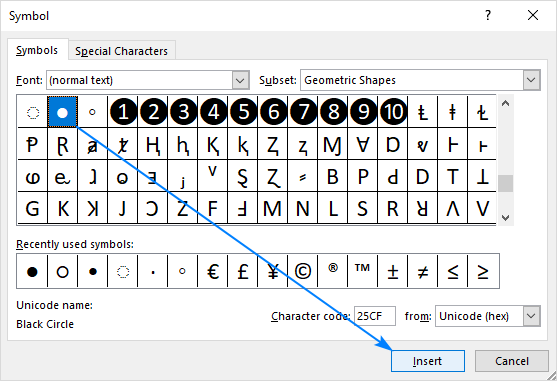
The most recent addition to my shortcuts.txt file is Microsoft's extensive list of keystroke commands for Word 2002, 2003, and 2007.
#Keyboard shortcut bullet point word how to
About two years ago, I explained how to create an easy-to-open text file listing all the keyboard shortcuts you're ever likely to need. Just what you need, a dozen more keystroke combinations to try to remember. You can even apply a hanging indent by pressing Ctrl+T or remove it by pressing Shift+Ctrl+T. Allen Wyatt's WordTips site provides a great list of keyboard shortcuts for altering a paragraph's spacing (Ctrl+1 for single space, Ctrl+2 for double space), alignment (Ctrl+L aligns left, Ctrl+R right, Ctrl+E centered, Ctrl+J justified), and indents (Ctrl+M one tab space, Shift+Ctrl+M minus one tab space). Most of us rely on a mouse to make format changes in Word, but we can reformat Word docs just as easily using some of the program's more obscure keyboard shortcuts.īack in 2008, I described how to copy and paste only a paragraph's formatting, not its text. This is especially true in organizations attempting to apply singular style conventions. Press the keystroke again, and the bullets are gone.Whenever two or more people work on the same Microsoft Word document, there are bound to be formatting conflicts. Now, whenever you press the keystroke you chose in step 4, it is the same as clicking on the Bullets tool. Click on Cancel to close the Word Options dialog box.


Unfortunately, there is no just-as-easy way to do the same thing using the keyboard. Word includes a handy-dandy tool (available on the Home tab of the ribbon, in the Paragraph group) that allows you to add bullets to a paragraph in a jiffy and just as easily remove them.


 0 kommentar(er)
0 kommentar(er)
